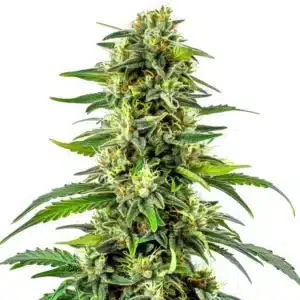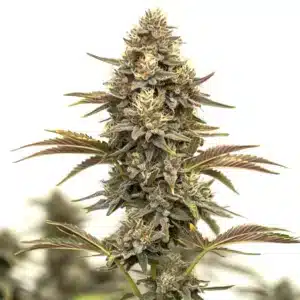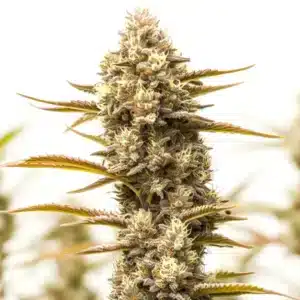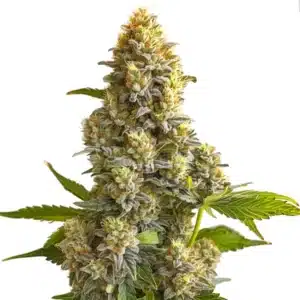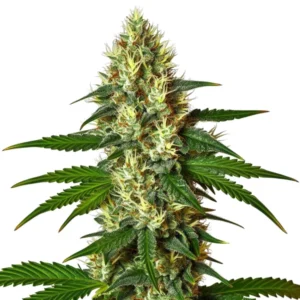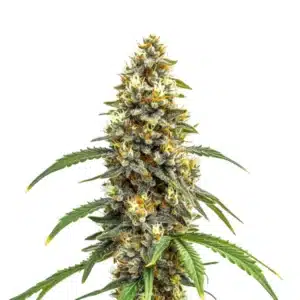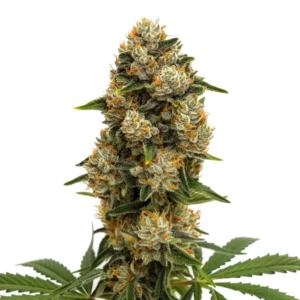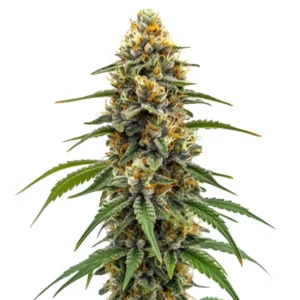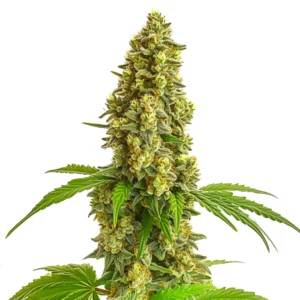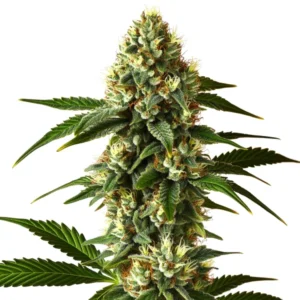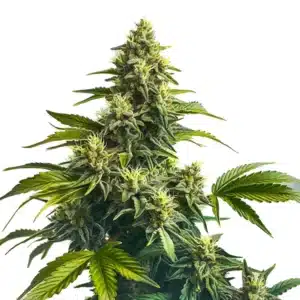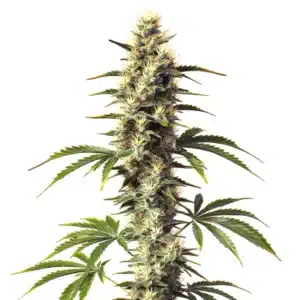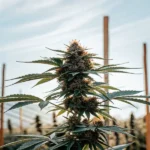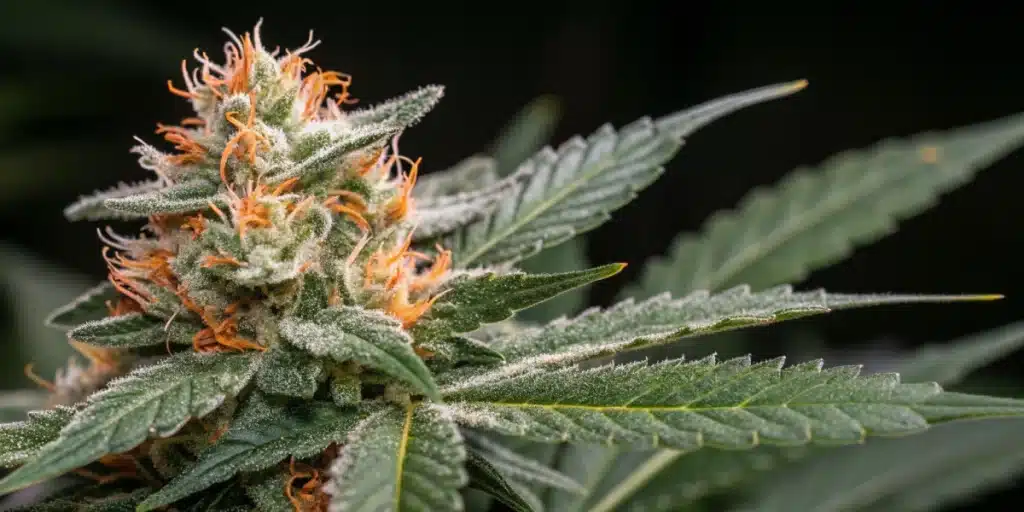
How to Grow Carmen × Durban Poison Weed Strain
Carmen × Durban Poison Strain Description
Carmen × Durban Poison combines the tropical sweetness of Carmen with the classic energy of Durban Poison. This feminized 40% Indica / 60% Sativa cross delivers 17%–20% THC and negligible CBD (0.02%), producing a happy, energetic high with clear-headed focus and giggly sociability. Its resinous buds release bright citrus, incense, and sweet aromas, thanks to terpenes like Limonene, Linalool, Myrcene, and Alpha-Bisabolol. Growers value its medium yields of 1.47–1.64 oz/ft² (450–500 g/m²) indoors or around 17 oz (500 g) per plant outdoors in just 8–10 weeks from seed.
Promos & Deals
Growing Environment
Maintain indoor temperatures between 70–78 °F (21–26 °C) with a 5 °F drop at night. Keep relative humidity (RH) at 55%–65% during vegetative growth, then reduce to 40%–50% once flowering starts to concentrate resin and prevent mold.
Recommended Strains
Carmen 2.0
|
|
THC | 10% - 15% (Low) |
|
|
Type | Feminized |
|
|
Yield | Medium |
|
|
Phenotype | 30% Indica / 70% Sativa |
Carmen x Durban Poison
|
|
THC | 17% - 20% (Medium) |
|
|
Type | Feminized |
|
|
Yield | Medium |
|
|
Phenotype | 40% Indica / 60% Sativa |
Outdoors, select a sunny, sheltered site with well-draining, amended soil. Ensure at least six hours of direct sun daily. In hot regions, use shade cloth during peak heat; in cooler areas, a hoop house extends the season and protects buds from rain.
Setting Up Your Grow Space
Carmen × Durban Poison Weed Strain Indoor Cultivation
Set up a 3×3 ft tent with reflective Mylar. Hang full-spectrum LEDs on an 18/6 schedule throughout. Install a carbon-filtered exhaust and intake vents for odor and climate control. Place an oscillating fan at canopy level to strengthen stems and prevent hotspots.
Use 3–5 gal fabric pots filled with an airy soil mix (pH 6.0–6.5) amended with perlite. Automate temperature, humidity, and lighting with digital controllers for consistent conditions over the 8–10 week cycle.
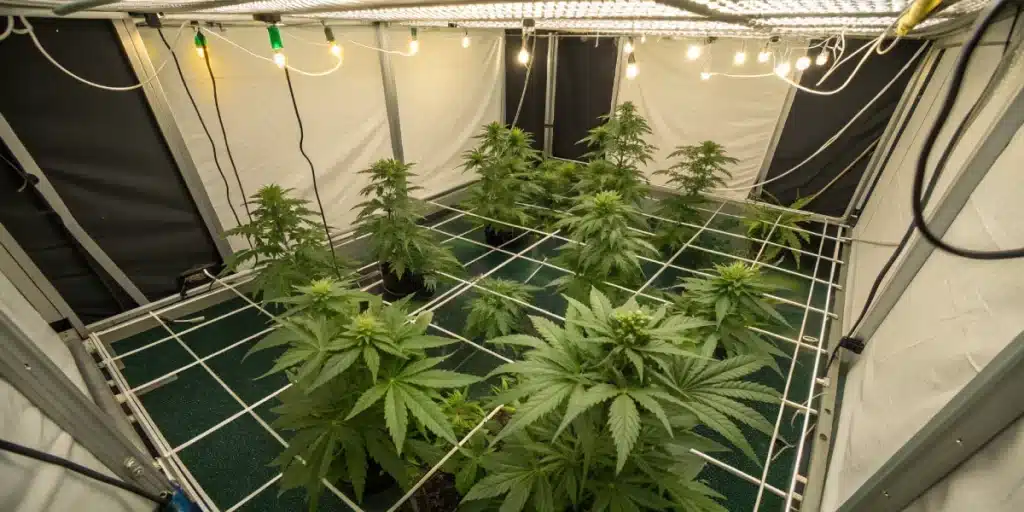
Carmen × Durban Poison Weed Strain Outdoor Cultivation
Prepare raised beds or fabric pots with a 2:1 mix of native soil and compost/perlite. Space plants at least 3 ft apart. Stake or cage early to support heavy colas.
Water deeply when the top inch of soil dries, then allow slight dry-down to encourage deep roots. Mulch to retain moisture, stabilize temperature, and suppress weeds. Shield buds from heavy rain with removable covers during early flowering.
Seed Propagation and Germination
Soak seeds in distilled water for 12 hours, then place between damp paper towels at 75–80 °F (24–27 °C). Once taproots appear (24–48 hours), plant taproot-down ½ inch into a moist starter mix under a humidity dome. Provide 18/6 gentle light, 70–75% RH, and remove the dome gradually over 3–4 days.
Carmen × Durban Poison Weed Strain Vegetative Phase
Run lights at 18/6 with fixtures positioned 18–24 inches above the canopy. Feed a nitrogen-rich nutrient (N-P-K 3-1-2) at half strength weekly. Apply low-stress training (LST) during weeks 2–3 to create an even canopy and expose bud sites.
Maintain 70–78 °F and 55%–65% RH. Introduce beneficial microbes or kelp foliar sprays to enhance root health. Prune lower leaves that receive little light to improve airflow.
Carmen × Durban Poison Weed Strain Flowering Phase
Carmen × Durban Poison blooms without a light schedule change around week 4. Transition to bloom nutrients high in phosphorus and potassium (N-P-K 1-3-2). Drop RH to 40%–50% and keep daytime temps at 65–75 °F to maximize resin.
Perform light defoliation in weeks 6–8 by removing obstructing fan leaves. Support heavy colas with soft ties. Begin flushing with plain, pH-balanced water in the final week to improve flavor.
Fertilization and Nutrition
Veg (weeks 1–3): N-P-K 3-1-2 at half strength. Early bloom (weeks 4–6): N-P-K 1-3-2. Late bloom (weeks 7–10): N-P-K 0-3-3. Supplement calcium and magnesium if deficiency appears (yellowing or spotting).
Amend soil with worm castings and kelp meal at planting to feed microbes and boost terpenes. A foliar seaweed spray in early bloom supports bud set without altering pH.
Pest & Disease Control
Inspect daily for spider mites, aphids, and thrips. Treat with neem oil or insecticidal soap at first signs, covering undersides. Use yellow sticky traps to monitor flying pests. Maintain strong airflow and avoid overhead watering in bloom.
Quarantine new plants for 7 days before introducing them to your main crop to reduce disease risk.
Carmen × Durban Poison Weed Strain Harvesting & Curing
Harvest when 70%–80% of trichomes are cloudy with some amber. Cut branches, trim fan leaves, and hang buds upside-down in a dark, ventilated room at 60–70 °F and 50% RH. Rotate for even drying over 7–10 days until stems snap.
Manicure and jar buds loosely in glass containers to 75% capacity. “Burp” jars 5–10 minutes daily week 1, then weekly for 2–4 weeks. Use humidity packs to maintain 58%–62% RH.
Post-Harvest: Drying, Curing & Storage
Store cured buds in airtight jars with humidity packs at 60–65 °F in darkness. For long-term storage, vacuum-seal in Mylar with desiccants. Label jars with strain and date, and check monthly to rebalance humidity.
Troubleshooting Common Issues
Nutrient Imbalances: Yellow leaves indicate N deficiency; brown tips show burn. Flush with pH-balanced water and resume feeding at half strength.
Environmental Stress: Heat stress causes curl; light burn bleaches. Raise lights, improve ventilation, keep temps below 80 °F, RH above 40%.
Watering & pH/EC: Overwater droops; underwater wilts. Water when the top inch is dry. Maintain pH 6.0–6.5 and EC 1.2–1.8 mS/cm.
Is Carmen × Durban Poison Indica or Sativa?
This strain leans Sativa (60% Sativa / 40% Indica), offering energetic, euphoric effects balanced by gentle body relaxation perfect for daytime creativity and mood uplift.
Advantages & Disadvantages
Advantages: Rapid 8–10 week cycle, uplifting Sativa energy, forgiving genetics, medium yields, clear-headed sociability.
Disadvantages: Requires humidity control to avoid mold, moderate yields, mild sedation may not suit evening use.
Why Buy Carmen × Durban Poison Strain
Choose Carmen × Durban Poison for its bright citrus aroma, energetic high, and relief from anxiety, depression, and sleeplessness. Feminized seeds guarantee uniform female crops and consistent performance.
Carmen × Durban Poison Weed Strain Similar Strains
Durban Poison
Durban Poison, pure Sativa from South Africa, finishing in 8–9 weeks with high energy, sweet-spicy aroma, and clear-headed effects mirrors Carmen’s lineage.
Super Lemon Haze
Super Lemon Haze, sativa-dominant (80/20), flowering in 9–10 weeks, offering zesty citrus notes and uplifting euphoria similar energetic profile.
Carmen
Carmen, parent strain with fruity–incense bouquet, finishing in 8 weeks, delivering balanced clarity and light relaxation forms the backbone of this hybrid.
Detailed Terpene & Cannabinoid Profile
Major Cannabinoids:
- THC (17–20%): Primary psychoactive compound responsible for the energetic, uplifting effects.
- CBD (~0.02%): Minimal presence, so the high remains clear and focused without pronounced anti-anxiety effects.
- Minor Cannabinoids: Trace amounts of CBG and CBC can contribute subtly to entourage effects, modulating the overall experience.
Key Terpenes:
- Limonene: Provides bright citrus aroma and mood-lifting properties, synergizing with THC to enhance energy and stress relief.
- Linalool: Floral incense scent that offers mild sedation and anti-anxiety benefits, balancing the Sativa lift.
- Myrcene: Earthy-musky notes that promote relaxation and muscle ease, aiding with insomnia and pain relief.
- Alpha-Bisabolol: Sweet, lightly floral anti-inflammatory and skin-soothing, supports comfortable topical applications.
- Terpinolene & Beta-Farnesene: Add sweet–piney undertones and antioxidant effects, rounding out the bouquet.
Together, these compounds create a complex profile: citrus-forward on the nose, balanced by subtle floral and earthy backnotes, while delivering a clear, energized head high and gentle body calm.
Cloning & Mother Plants
Maintaining a reliable mother plant ensures genetic consistency and rapid access to new clones. Select a vigorous, pest-free female from your Carmen × Durban Poison crop ideally one that has displayed uniform growth and desirable terpene expression. Keep the mother under an 18/6 light cycle in a dedicated space, feeding lightly and pruning regularly to promote fresh, vigorous shoots.
When taking cuttings, choose healthy lateral branches 4–6 inches long. Using a sterile, sharp blade, make a 45° cut just below a node, remove lower leaves, and dip the cut end in a hormone rooting powder. Insert the cutting into a moist propagation medium (rockwool cube, peat pellet, or coco plug) and place under a humidity dome at 75–80 °F with 70–80% RH. Provide 18 hours of gentle light and bottom heat if possible.
Roots typically emerge in 7–10 days; once you see healthy white root tips, transplant clones into small pots of the same soil mix used for mother plants. Harden off by gradually reducing humidity and increasing light intensity over a few days to ensure strong, transplant-ready seedlings. Proper mother-clone maintenance accelerates your grow cycles and preserves the exact Carmen × Durban Poison phenotype you prefer.
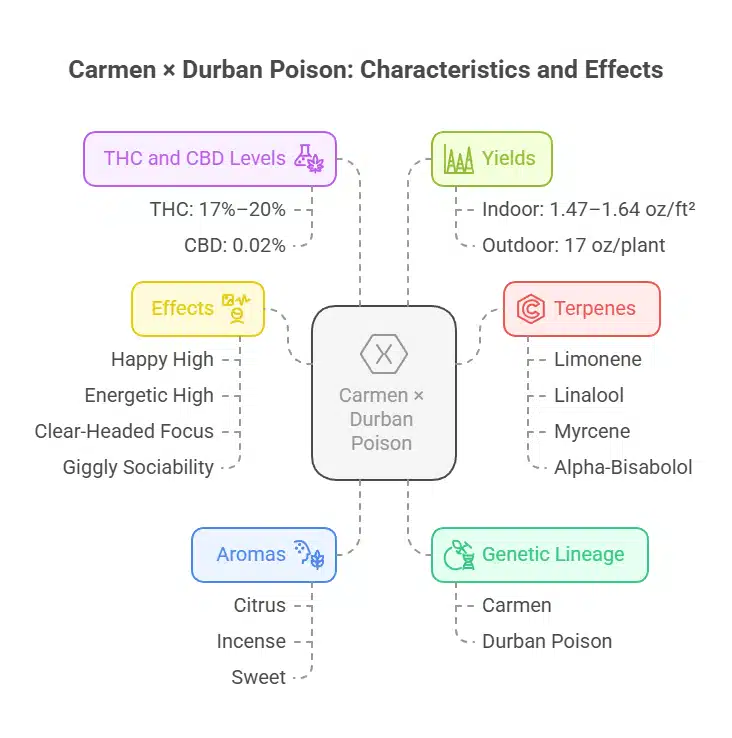
Tips for Professionals
Automate climate controls use digital thermostats, humidistats, and CO₂ enrichment during veg. Employ SCROG to maximize canopy uniformity and bud site count.
Inoculate soil with mycorrhizae at transplant to boost root growth and nutrient uptake. Log environmental data light, humidity, feed schedules to refine protocols and enhance terpene expression over successive grows.
FAQs
How long does Carmen × Durban Poison take to finish?
It completes its full cycle in 8–10 weeks from seed to harvest no light changes needed thanks to feminized genetics.
Can I grow it outdoors in temperate climates?
Yes, plant after the last frost in a sunny spot. Use shade cloth during heat waves and covers to protect buds from rain.
What yields can I expect?
Indoors: 1.47–1.64 oz/ft² (450–500 g/m²). Outdoors: around 17 oz (500 g) per plant under optimal conditions.


